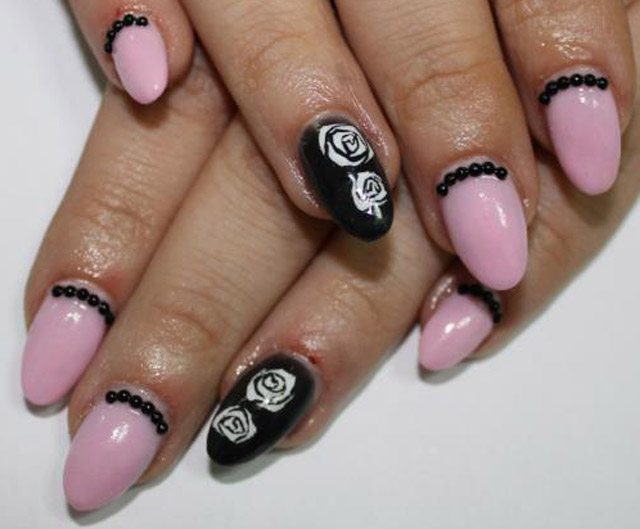Summer Nail Designs Biography
Source:-Google.com.pk
The matrix, sometimes called the matrix unguis, keratogenous membrane, nail matrix, or onychostroma, is the tissue (or germinal matrix) which the nail protects. It is the part of the nailbed that is beneath the nail and contains nerves, lymph and blood vessels. The matrix is responsible for producing cells that become the nail plate. The width and thickness of the nail plate is determined by the size, length, and thickness of the matrix, while the shape of the fingertip itself shows if the nail plate is flat, arched or hooked. The matrix will continue to grow as long as it receives nutrition and remains in a healthy condition. As new nail plate cells are made, they push older nail plate cells forward; and in this way older cells become compressed, flat, and translucent. This makes the capillaries in the nail bed below visible, resulting in a pink color. The lunula ("small moon") is the visible part of the matrix, the whitish crescent-shaped base of the visible nail. The lunula can best be seen in the thumb and may not be visible in the little finger. The nail bed is the skin beneath the nail plate. Like all skin, it is made of two types of tissues: the deeper dermis, the living tissue which includes capillaries and glands,[8] and the epidermis, the layer just beneath thenail plate, which moves toward the finger tip with the plate. The epidermis is attached to the dermis by tiny longitudinal "grooves"[5] called matrix crests (cristae matricis unguis). In old age, the nail plate becomes thinner so that these grooves become more visible.
The nail sinus (sinus unguis) is where the nail root is; i.e. the base of the nail underneath the skin. It originates from the actively growing tissue below, the matrix. The nail plate (corpus unguis) is the hard part of the nail, made of translucent keratin protein. Several layers of dead, compacted cells cause the nail to be strong but flexible. Its (transverse) shape is determined by the form of the underlying bone. In common usage, the word nail often refers to this part only. The free margin (margo liber) or distal edge is the anterior margin of the nail plate corresponding to the abrasive or cutting edge of the nail. The hyponychium (informally known as the "quick") is the epithelium located beneath the nail plate at the junction between the free edge and the skin of the fingertip. It forms a seal that protects the nail bed. The onychodermal band is the seal between thenail plate and the hyponychium. It is just under the free edge, in that portion of the nail where thenail bed ends and can be recognized by its glassy, greyish colour (in fair-skinned people). It is not visible in some individuals while it is highly prominent on others. The eponychium is the small band of epithelium that extends from the posterior nail wall onto the base of the nail. Often and erroneously[contradictory] called the "proximal fold" or "cuticle", the eponychium is the end of the proximal fold that folds back upon itself to shed an epidermal layer of skin onto the newly formednail plate. This layer of non-living, almost invisible skin is the cuticle that "rides out" on the surface of the nail plate. Together, the eponychium and the cuticle form a protective seal. The cuticle on the nail plate is dead cells and is often removed during manicure, but the eponychium is living cells and should not be touched. The perionyx is the projecting edge of the eponychium covering the proximal strip of the lunula.
The nail wall (vallum unguis) is the cutaneous fold overlapping the sides and proximal end of thenail. The lateral margin (margo lateralis) lies beneath the nail wall on the sides of the nail and thenail groove or fold (sulcus matricis unguis) are the cutaneous slits into which the lateral margins are embedded. The paronychium is the border tissue around the nail and paronychia is an infection in this area. A healthy finger nail has the function of protecting the distal phalanx, the fingertip, and the surrounding soft tissues from injuries. It also serves to enhance precise delicate movements of the distal digits through counter-pressure exerted on the pulp of the finger. The nail then acts as a counterforce when the end of the finger touches an object, thereby enhancing the sensitivity of the fingertip, even though there are no nerve endings in the nail itself. Finally, the nail functions as a tool, enabling for instance a so-called "extended precision grip" (e.g. pulling out a splinter in one's finger), and certain cutting or scraping actions. The growing part of the nail is under the skin at thenail's proximal end under the epidermis, which is the only living part of a nail.









